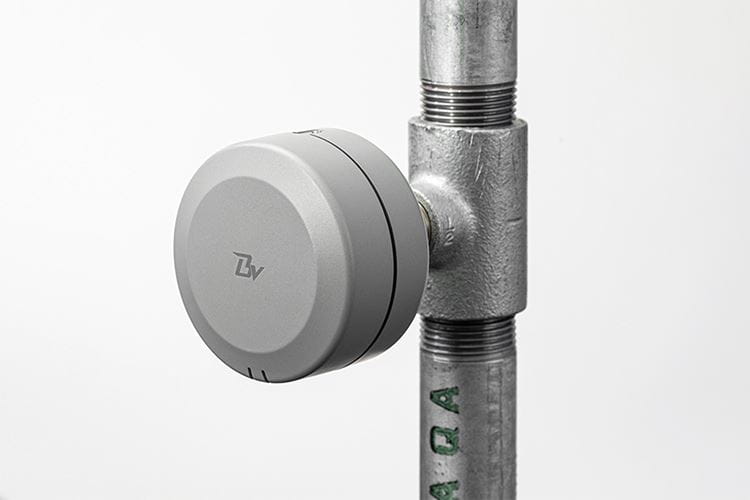Building automation
Industrial grade low power wireless connectivity for building automation and sensor networks

Nordic Semiconductor today announces that Braveridge, a Fukuoka City, Japan-based IoT solutions company, has selected Nordic’s nRF9160 low power System-in-Package (SiP) with integrated LTE-M/NB-IoT modem and GPS to provide the wireless connectivity and processing power for its ‘Gas Pipe Dew Point/Gas Pressure Remote Monitoring System’. The system helps utilities and contractors rapidly identify gas pipe faults at source, and reduce the time and cost of carrying out maintenance and repairs.
Faults in the gas supply can occur for a range of reasons including the structural failure of old pipes, road construction, pipes freezing in adverse weather, as well as water leaking into the pipe as a result of a crack. Such faults require the gas supply to be immediately cut off and a maintenance crew to be dispatched to identify the affected area and perform repairs, potentially causing significant disruption to consumers. Locating the source of the fault has traditionally required expensive instrumentation and a trial- and error-based process from the maintenance crew. The Braveridge remote monitoring system eliminates this process and enables the gas supply to be up and running faster than previously possible.
In operation, multiple end devices (terminal units) are installed at appropriate locations across the gas pipe network. Each end device employs two pressure sensors to monitor and record the air pressure both within and outside the gas pipe to determine the pressure difference between the two environments that can indicate the presence of a potential leak. A temperature and humidity sensor monitors dew point (the atmospheric temperature below which water droplets begin to condense and dew can form) to notify of the potential invasion or seepage of water into the pipe.
Each end device also integrates an nRF9160 SiP to provide LTE-M connectivity to relay this data to the cellular network and in turn to Braveridge’s ‘BraveGATE Cloud Service’, and a web server where maintenance management can review the data and direct maintenance crews to the location of a fault. The nRF9160 SiP’s in-built GPS provides precise location information to pinpoint where a potential fault has occurred, while its 64 MHz Arm® Cortex®-M33 processor and 1MB Flash and 256KB RAM offers ample computational power to not only support the LTE-M cellular connectivity and enable rapid response to GPS location requests, but also perform edge processing of the complex proprietary algorithms demanded by the multiple sensors.

According to the company, the BraveGATE platform dramatically simplifies development of LTE-M cellular IoT solutions as the BraveGATE Cloud Service provides a network topology which does not require a Cloud server. App developers can directly downlink control end devices from the webserver using a REST API interface. In the BraveGATE system configuration, each end device installed with the nRF9160 SiP becomes a server, so a Cloud-based server is no longer required. PCs or smartphones directly downlink requests to each end device as a client (computing). The server terminal will then make an uplink response to the requested data. This new network system allows the client (computing) to obtain data it needs when it needs it, reducing unnecessary communication. This enables significant reduction in power consumption of each end device. BraveGATE also easily allows regular uplinks in response to requests from the client (computing).
Each end device is powered by two CR123 lithium batteries, providing a battery life of approximately six months between replacement, thanks in part to the low power capabilities of the nRF9160 SiP. The nRF9160 SiP is optimized for low power operation, supporting PSM and eDRX power saving modes. For example, in PSM mode, uploading 1kB every 12 hours, the average current is 5.5µA. When in sleep mode the average current is ~2µA. Target applications for the nRF9160 SiP include asset tracking, smart city, smart agriculture, industrial, smart metering, wearables, and medical solutions.
The nRF9160 SiP is certified for global cellular IoT applications and comprises the dedicated application processor and memory, a multimode LTE-M/NB-IoT modem with integrated RF front end (RFFE), GPS, and power management in a compact 10 by 16 by 1mm package. Along with the processor and generous memory allocation, the SiP includes a range of analog and digital peripherals, automated power and clock management, Arm TrustZone® for trusted execution, and Arm CryptoCell™ 310 for application layer security. The processor communicates with the LTE modem through a BSD secure sockets API and supports the application layer protocol (for example CoAP, MQTT or LWM2M) and the application itself.
The nRF9160 SiP’s LTE modem supports both SIM and eSIM, offers 700 to 2200MHz LTE band support, 23dBm output power, and single pin 50 Ω antenna- and UICC-interfaces. The LTE stack layers L1-L3, IPv4/IPv6, TCP/UDP, TLS/DTLS are part of the modem firmware. Related products include the nRF9160 DK, a precertified single board development kit and the nRF Connect SDK, a software development kit which includes application layer protocols, application examples, and LTE modem firmware offered as precertified and precompiled downloads.
“The most groundbreaking element of Nordic’s nRF9160 is the integration of the application processor into the SiP eliminating a UART interface [needed to support an external processor], something no other cellular IoT solution can offer,” says Yasunari Kohashi, Braveridge, CEO. “This eliminates the long development lead-time and repeated bug issues common amongst these modular solutions [that use an external processor].
“In addition to the powerful built-in processor, the nRF9160 achieves the industry’s lowest power consumption, which in combination with the technical support Nordic provides makes the nRF9160 an easy choice for developers.”
The system was jointly developed by Braveridge and Japan’s City Gas Companies Association. Led by Fukuoka-based Saibu Gas, the association comprises eleven gas companies nationwide.
Industrial grade low power wireless connectivity for building automation and sensor networks